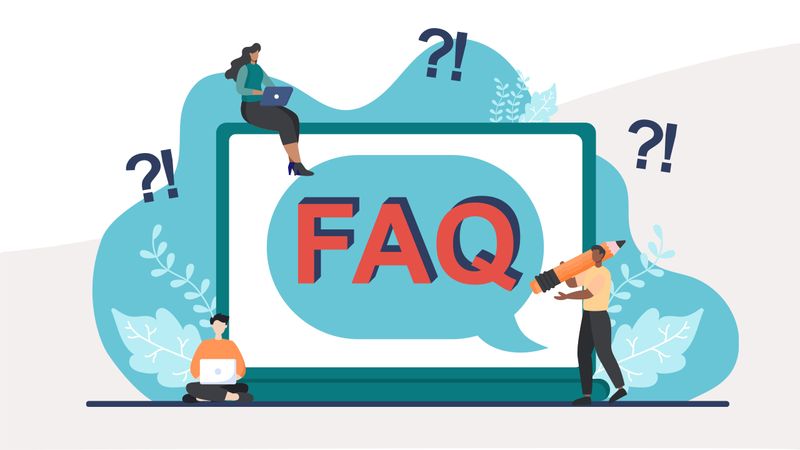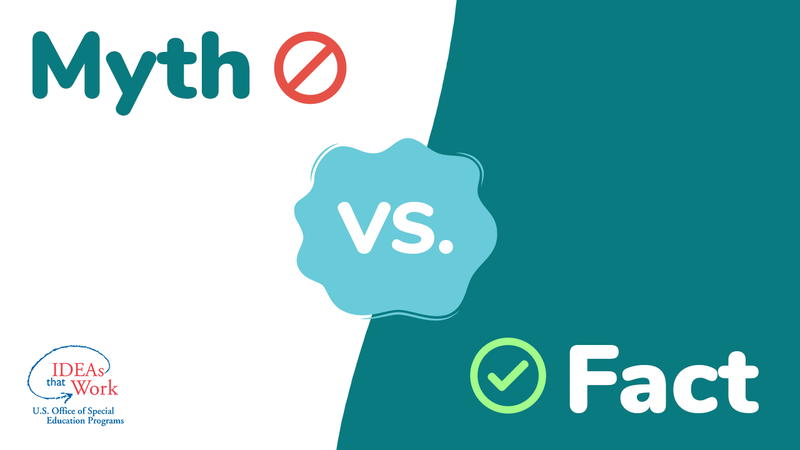FAQ from the Assistive Technology (AT) Guidance Webinar

Jump to a section:
Federal and State
Question: When will the Section 504 revised guidance be published?
Answer: The Department of Justice recently announced the final amendment to Title II of the American with Disabilities Actexternal site to strengthen web and mobile app access for individuals with disabilities. Health and Human Services’ anticipated release of an amendment to Section 504 for the healthcare industry is pending.
Question: Is the assistive technology (AT) guidance embedded in the NETS? If not, why not?
Answer: The ISTE Standards for educators and education leadersexternal site (formerly NETS) includes language regarding designing accessible and active digital learning environments that accommodate learner variability. AT provisions are often the accommodations considered when addressing learner variability. However, the Standards do not include the details of the AT Guidance.
Question: I heard procurement cited; however, I do not see guidance on procurement for AT, and procurement and privacy laws seem to act as bottlenecks in this process. Is this guidance posted somewhere that I may have overlooked?
Answer: There are not specific myths and facts in the Guidance that address procurement and privacy. Myth and Fact 19 in the AT Guidance states that “Regardless of the type of AT device the child needs, IDEA requires that as soon as possible following the development of the IEP, special education and related services are made available to the child in accordance with the child’s IEP.” And Myth and Fact 20 states that IEP teams and other personnel such as IT and Local Education Agency (LEA) leaders need to engage in regular communication in order to provide timely services. This can support and enhance a procurement process. Information about privacy implications for AT use is available on the Center on Inclusive Technology and Education Systems (CITES) website. For procurement guidanceexternal site, the National Center on Accessible Educational Materials (AEM Center) provides a section dedicated to the required vetting process to ensure procured technology is accessible to all learners.
Schools and Districts
Question: Can you touch on how this benefits secondary education (universities and colleges)?
Answer: For many students with disabilities, the use of AT is a lifelong process that doesn’t stop when they leave K-12 and move into a post-secondary environment. It takes time for students to gain self-understanding about the technology features and preferences that work best to support their learning. See Myth and Fact 7 for more information about the transitioning process. As students transition to post-secondary environments, the process changes in important ways: students need to disclose that they have a disability and self-advocate for the technology and accommodations they need. The AT Myths & Facts Guidance is intended to support learners across the lifespan. It focuses on IDEA requirements, which is specific for children, students and youth with disabilities in early learning and K-12. It offers information to support these educational settings in ensuring the robust and timely provision of AT, and it also can be used to prepare students for what comes later in life when they are expected to take greater ownership of their learning and advocate for their AT needs to be met. The AT Myths & Facts Guidance is also especially important for teacher preparation programs: it offers crucial information to prepare educators and teachers in early childhood programs and K-12 settings.
Question: I think that post-secondary programs should be mandated to offer a course as part of the certification requirements (or two or three) for future teachers and service providers to understand AT devices/services/continuum, UDL, MTSS, SETT framework, etc.…There is such a lack of knowledge and starting at the foundation would help to ensure that the consideration of AT is at the forefront and not retrofitted or an afterthought.
Answer: The AEM Center has a new Online Learning Series on Accessible Materials and Technologiesexternal site that was created in Canvas Commons and can be imported into any institution’s instance of the Learning Management System (LMS). It can also be accessed on CAST’s Canvas platform if your institution uses a different LMS. The three existing modules (with more to come) focus on foundational knowledge of three key topics that would be helpful for future teachers to have as part of their teacher preparation experience: accessibility, AT, and accessible educational materials.
Question: The Guidance says that accessible resources/tools available to all can ALSO be a specific AT for a specific student when they need it for a specific need. This makes sense and is also a bit confusing since all can have access! Are we talking about the need to document this correctly for those students who need that AT?
Answer: Documentation is essential for those who need the AT. Refer to the Myth and Fact 6 that describes how IDEA requires documentation to be included in the IEP. The difference between accessible educational materials and AT is explained in more detail in Module 2.1external site of the AEM Center’s Online Learning Series on Accessible Materials and Technologies. An accessible or inclusive technology is considered AT when it is necessary for a student to access learning and must be included in the child’s IEP. The CITES video on the What and Why of Inclusive Technology also helps to clarify the distinction.
IEPs and Documentation
Question: As an advocate, what are some suggestions to get digital technology in IEP plans at the student/educator level?
Answer: There are multiple places in the IEP process when digital technology can be discussed. Depending on the student, this could be in the goals (sometimes objectives) section, the accommodation section for both curriculum and assessments (district and state level), as well as in the section of the IEP that asks if the student requires AT. The Center for Parent Information and Resources recently published the AT Checklists for families/youthexternal site, which support the IEP process. In addition, CITES developed IEP/504 Plans in Virtual LearningPDF document and the Guide to IEP/504 Plans in Virtual Learning Environmentsexternal site. Refer to the Myths and Facts 5 and 6, which affirm that it is the IEP Team’s responsibility to ensure AT devices and services documentation.
Question: Could you discuss the need for training students, parents, and teachers when AT is included in an IEP?
Answer: This is addressed in the AT Myths & Facts Guidance. For example, refer to Myth and Fact 3, which states that the requirement of providing AT services includes training for parents and teachers to support proper use of the AT in school and at home. Additionally, the CITES Framework includes action steps to ensure educators and families have the opportunity to support the use of AT.
Question: Some of the low-tech AT items (timer, graphic organizer) are accommodations we include in the accommodations section of the IEP rather than the AT section. Do they need to be listed in both sections?
Answer: Please note that IEP paperwork looks different in different districts, including different sections, even though the same requirements are met. In addition, this is an area where confusion is understandable since the word “accommodation” is not defined in federal law. However, in general use, accommodations are tools or instructional strategies that provide students with disabilities with equal access to instruction. For example, an accommodation can be a change in timing, formatting, setting, response and/or presentation. The Individuals with Disabilities Education Act (IDEA) defines AT as “any item, piece of equipment, or product system, whether acquired or commercially off the shelf, modified, or customized, that is used to increase, maintain, or improve the functional capabilities of a child with a disability.” There is legitimate overlap across these categories. The accommodation or AT may fit in multiple categories of an IEP depending on the student, the need, and the application. What is important is that the AT is represented in a way that documents how and when the student needs the device or product system to access educational materials without barriers. AT often builds independence as it is more frequently leveraged by the child or student, whereas accommodations are often controlled by the adults supporting the child/student. Myth and Fact 6 describes how IDEA requires documentation to be included in the IEP.
Question: How do you recommend supporting IEP teams in understanding and making decisions about when a teaching practice becomes a low-tech AT for a student vs. when it becomes an accommodation?
Answer: Teaching practices that seem similar to low tech AT may be focused on providing scaffolds and supports for students to become independent. If the system or the tool is consistently needed for the student to be successful in accessing and responding to materials and/or engagement and behavior, then add it to the IEP in either area. The important piece, even with low-tech AT, is that there is a written record about what the student needs to be successful. Please note, when AT is written into the IEP or Individualized Family Service Plan (IFSP), it is legalized and can be used across all settings as applicable, including formal assessments. Refer to the Myths and Facts 5 and 6, which describe that it is the IEP Team’s responsibility to ensure AT devices and services documentation.
Question: My state's special education handbook doesn't list AT as a related service. Can you address how/where AT services should be listed on an IEP?
Answer: It is possible your state’s handbook would list AT as an accommodation, which would reflect best practice in the field. While some AT devices may require services, most AT devices are considered to be accommodations. Therefore, if a student needs AT to access, respond, or engage with materials, this will be listed as an accommodation as well as in the section of the IEP that asks if the student requires any AT devices. Documentation is essential for those who need the AT. Refer to the Myths and Facts 5 and 6, which describe that it is the IEP Team’s responsibility to ensure AT devices and services documentation.

Myths Vs. Facts
The AT Myths & Facts Guidance is intended to support learners across the lifespan. It focuses on IDEA requirements, which is specific for children, students and youth with disabilities in early learning and K-12. programs: it offers crucial information to prepare educators and teachers in early childhood programs and K-12 settings.
Access Myths and Facts Resources